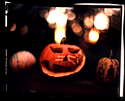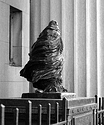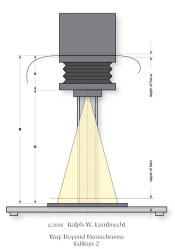David
I used your data provided in post #56 and 69 and did some calculations. The results verify your observations described in post #56.
assumptions:
4x5-inch negative
4x magnification (16x20-inch print)
f/4.5
CoC = 0.030 mm (critical observation)
This calculates to a depth of field at the baseboard of 5.4 mm. You reported 5-6 mm without focusing aid. So, we have a match. You further reported an increase in detection by using a 6x focusing aid to a bit less than 2 mm. Seems reasonable, actually, I would have expected an increase closer to that of the magnification of the focusing aid, so, down to 1 mm, but OK, eyes and optics are never perfect.
This is good info. I agree with your data, and your reported observations sound reasonable.
Now back to the statements, we are trying to address:
David: I can see the difference in the grain focuser between having the paper under the grain focuser and not, and that's enough to convince me... (post #23)
Ralph: Sorry, but that's simply impossible! (post #38)
Double-weight paper has a thickness of roughly 0.25 mm. You were able to detect a 2 mm difference with a 6x focusing aid. The top model from Peak has a magnification of 10x, so, you might be able to detect a 1.2 mm difference with it. I have a 20x focusing aid, with that, let's say 0.6 mm? Of course, we'll lose a bit to the optics again, but let's forget about that for now.
It looks like you are still off from seeing the difference between 'paper' and 'no paper' by a factor of 3x. And this was already assuming critical viewing CoC (0.030), not a huge enlargement (4x), wide open lens (f/4.5) and the highest possible focusing aid available (20x). Changing a few setting to more standard numbers, and you will be off by a factor of 10x.
I must repeat: it's impossible for you to see the difference of a piece of paper under the focusing aid.
But, what's more important, even if you see it under a 10x focusing aid, you'll never see it in the print. Also, your printing paper won't be flat enough to stay within 0.2 mm, and your negative carrier and enlarger alignment won't be good enough to support this ideal condition. So, it looks like we are sweating the small stuff, while the big stuff is eating our lunch.
However, I still think, we are making way too big of a deal of this. If you feel more comfortable to place a piece of paper under the focusing aid, by all means do so. After all, it makes it theoretically perfect. It won't matter, but it won't hurt either.







